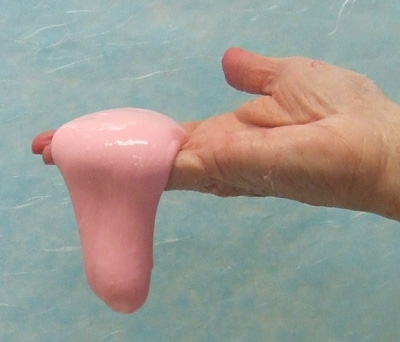Hi,
This Kids Science Newsletter includes a question of the month, current science events, and a simple science experiment.
Question of the Month
What is the difference between a sea and an ocean?
(answer follows the simple science experiment)
Science Current Events
- Snowicane Strikes Alaska
- A powerful storm struck Alaska during the week of November 8th. It roared across the Bering Sea from southeastern Chukotka, Russia to western Alaska. The storm was like a hurricane with snow. The powerful storm unleashed hurricane force winds, blizzard conditions, huge waves and coastal flooding. At one coastal reporting station on November 8th the ice accumulated at a rate of 23.5 inches per hour.
- Astronaut Don Pettit's Saturday Morning Science
- Astronaut Don Pettit will be part of the crew that lifts off for the International space Station on December 21st for his third space flight. He is planning to continue his Saturday Morning Science series for kids that he beamed down from space on his second trip into space. You can Google Pettit's name and Saturday Morning Science if you would like to follow some of his experiments. He will be working with soap bubbles. In space soap bubbles are not affected by gravity and can last up to a month.
- Oklahoma is still shaking
- Oklahoma has been hit with a whole series of small earthquakes. The largest quake was on November 5th. It was a magnitude 5.6 quake that brought down some brick chimneys. The area east of Oklahoma City continues to have small earthquakes that do not cause damage. No one is sure what are causing the earthquakes. Scientists are studying the area to see if the quakes are the result of rocks being broken apart deep underground to recover natural gas.
Science Trivia
- The storm of October 1804 was a late-season major hurricane. It brought vast amounts of snow to New England. It was the second of two storms in that season that were generated by cold air. The storm killed at least 9 people and caused damage across a large area of the Northeast Coast. Several ships in Boston Harbor were wrecked. The term snowicane was coined to describe the storm. The storm in Alaska this past month was a snowicane.
- Crayola crayons were introduced in 1903. By 1905 the company was producing 30 different colors of crayons. Today they have 133 standard colors and 29 of these colors are red.
- Plastics are made from natural materials like oil and coal. The oil, coal and other natural materials are heated creating plastics. All kinds of plastic are created in this way. Recently the Wall Street Journal reported that the US States uses approximately 1 billion plastic bags a year.
- Printing was invented in Korea and China about 700 A.D. They used wooden printing blocks to print on scrolls. The first books in Europe were printed by a German, Johann Gutenberg, in 1455. The first book he printed was a bible.
Simple Science Activity
The Mantle
Introduction
This activity demonstrates how the Earth's mantle can move in the Earth's interior. You will create a material that is similar to silly putty for this activity.

Materials
- White school glue
- Liquid starch
- Food coloring (opitonal)
- Fork
- Bowl
- Tablespoon
Directions
- Measure two tablespoon of white glue into a bowl.
- Pour one tablespoon of liquid starch on top of the glue.
- Mix the two ingredients together with a fork until it form a soft ball that can be picked up with your hands.
- Continue to knead the mixture with your hands.
- You may need to add a little more glue or starch if the mixture does not hold its shape.
- Add food coloring to your mixture to give it color.
- Roll some of the "mantle rocks" around in your hand to form the shape of a sausage.
- Allow the "mantle rocks" to flow over the side of your hand.
- Roll the mixture into a ball and pull it apart.
- If you give a jerk the "mantle rocks" should break apart.
- If they don't break apart add a little more glue or starch until they do.
Science behind the experiment
Earth's tectonic plates ride on rocks in the upper mantle. Scientists believe that the rocks deform under heat and pressure in the upper mantle so that sometimes the rocks act more like a plastic than a solid. Deep earthquakes are caused when mantle rocks break apart. Answer to the question of the month
What is the difference between a sea and an ocean?
Oceans are larger than seas. Most seas are part of the oceans. Today we now have five recognized oceans: Atlantic, Pacific, Indian, Arctic and Southern Oceans. The Mediterranean Sea is part of the Atlantic Ocean. The Bering Sea is part of the Pacific Ocean. Some seas like the Caspian are surrounded by land.
Share the newsletter
Please feel free to share this newsletter with a friend by forwarding it to them. If you know of a group who might enjoy the newsletter please let them know about it also.
Comments? Ideas? Feedback? I'd love to hear from you. Just reply to this Just For Kids Science Newsletter and tell me what you think!
Sincerely yours,
Myrna Martin
Websites:
www.RingofFireScience.com
www.Kids-Fun-Science.com
www.Kids-Earth-Science.com
www.The-Science-Site.com
|



